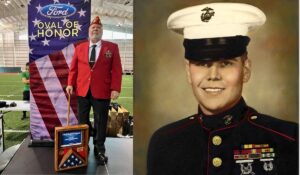Steamboats and Meigs County
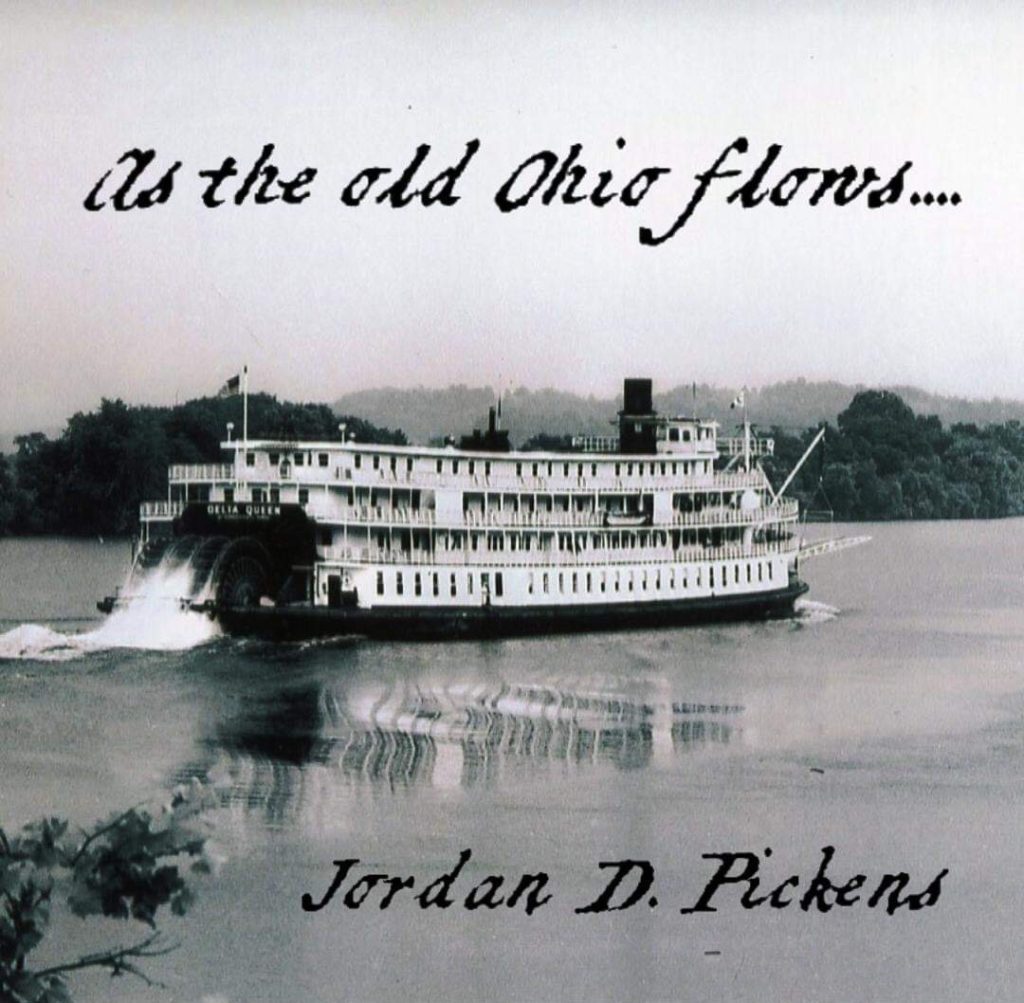
“Here’s to you all, our sentiments are real, may your days be as brightand your hearts be as light as the spray from an ol’ paddlewheel.” – Unknown. Something amazing happened earlier this week: it was announced DELTA QUEEN will once again sail on America’s inland waterways in 2020after a 12 year absence. This is exciting news for steamboat lovers and has given me the inspiration to share some history on some of Meigs County’s most famous steamboats, as well as to shed some light on the beloved DELTA QUEEN. Full steam ahead!
From Edgar Ervin’s Pioneer History of Meigs County, “In 1819 about the time of the organization of Meigs County, the steamboat age was ushered into the Ohio Valley which was without public roads. By 1830 more than 200 steamboats were churning the Ohio and Mississippi…. The second generation brought many famous Ohio River steamboats.”I was talking to a friend of mine, former captain of P.A. DENNY and DELTA QUEEN, Captain Don Sanders who said, “A lot of good river men came out of [Meigs County].”
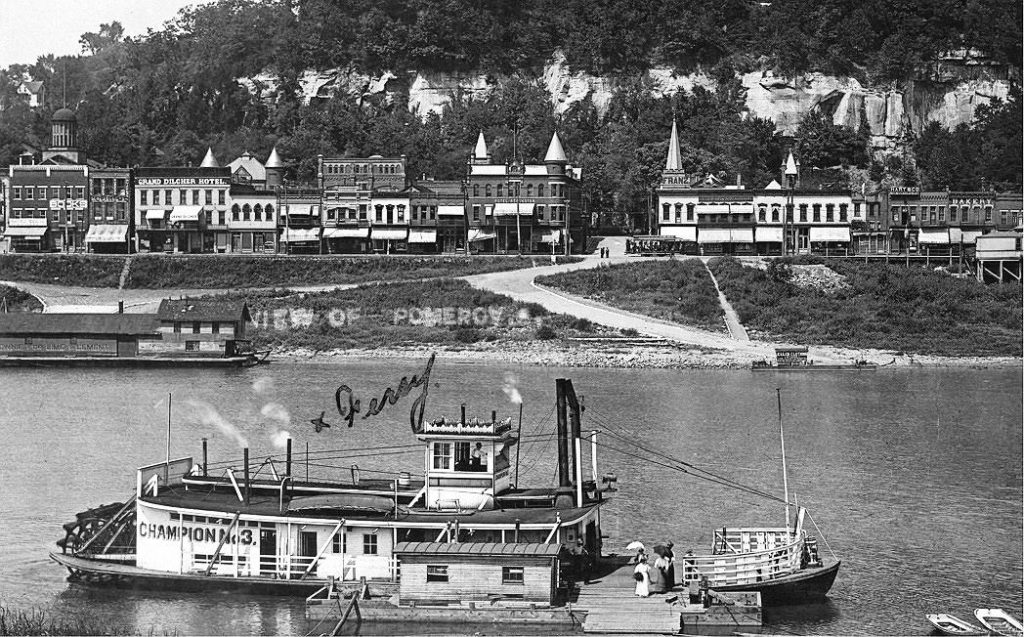
One of the most historic local steamboats WALL CITY was owned by various Pomeroy parties. According to Capt. Fred Way’s PacketDirectory, WALL CITY was built at Ironton, Ohio in 1874. She ran daily from Ravenswood to Middleport on the Ohio River. Captain Edwards owned a large Newfoundland dog which regularly rode the boat and was trained in various deck duties such as pulling the lines ashore. After WALL CITY was cut down by ice in 1883, her engines went to the towboat MARLEN RIGGS, andVALLEY BELLE succeeded WALL CITY in the trade. Officers included Captain Alf. Day; W.T. Cox (clerk); H.W. Resener (clerk); J.F. Cromley (clerk); Captain J.C. Edwards (master, 1880s); C.H. Crow (clerk, 1880s); J.E. Wilkinson (clerk, 1880s.)
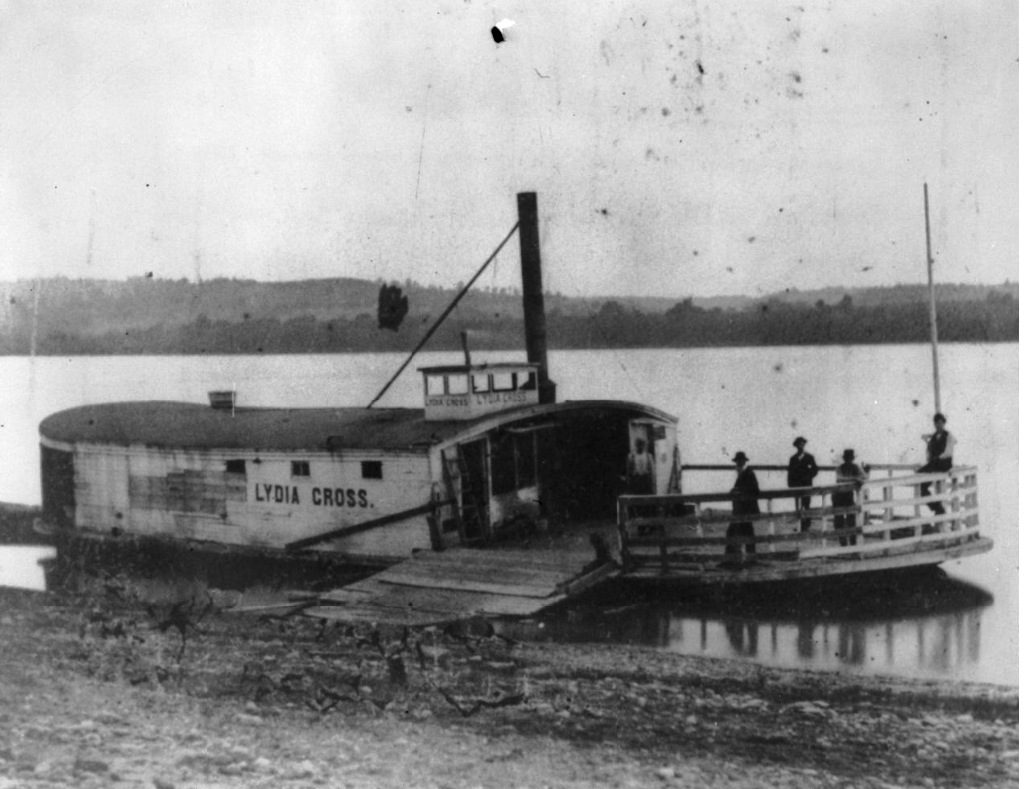
Another famous steamboat which held a longtime speed record was a sidewheeler called TELEGRAPH.
On December 9, 1891, Dave Scatterday registered Miss LucretiaBrewer, the first ?female passenger, at Proctorville, Ohio. The TELEGRAPH made a “fast run” from ?Cincinnati to Syracuse, Ohio in April 1892. She arrived at Pomeroy, Ohio in 19 hours ?and 7 minutes and at Syracuse in 20 hours, 17 minutes. She made only one landing ?along the way, at Huntington, and didn’t put out a line there but let a man hop off. In ?1894 the City of Madison was wrecked and her roof bell, which was originally on the ?TELEGRAPH NO. 3, was transferred to the TELEGRAPH. On the night of November ?22, 1897 the TELEGRAPH was upboundabove 12-Mile Island when pilots Charles ?Williams and ?Charles Dufour changed watches. They weren’t speaking to each other at ?the time for unknown reasons. When Williams relieved Dufour, Dufour immediately left ?the pilot house before Williams had his “night sight”. The boat was headed into a rocky ?cliff on the Indiana shore but before Williams could see the situation, she had run into?? the rocks and was wrecked. Both pilots had their licenses revoked as a result. (Way’s ?Packet Directory)

Before the construction of bridges, ferries were used to cross the Ohio River. The first ferry in Meigs County appeared in 1854 and ran between Pomeroy, Ohio, and Mason, Virginia, now West Virginia. The name of the ferry was unknown, but it was noted that it was powered by horse. Middleport and West Columbia also received a ferry that year named LARK, powered by steam. Pomeroy’s first steam powered ferry KATE HOWARD went into service in 1857.
LITTLE BEN, named after Ben Redmond of Middleport, Ohio, ran Middleport, Ohio, to Clifton, West Virginia. On April 14, 1913, she sank at the wharf grade at Middleport; she was pumped out by the towboat VALIANT. She was later owned by H.C. (Clate) Pickens and ran Racine, Ohio, to Graham Station, West Virginia. Another of Racine’s ferryboats was LYDIA CROSS. Little is known about this boat, other than it went into operation around 1876 and transported between Racine, Ohio, and Graham Station, West Virginia.
After KATE HOWARD went out of service, residents of Pomeroy, Ohio, and Mason, West Virginia, were ferried back and forth across the river by three different ferryboats, each named CHAMPION. CHAMPION served until 1882, when it was replaced by CHAMPION NO. 2. This vessel served for a 20-year period in Pomeroy, and in 1902 she was sold and operated at Gallipolis for a time. She was sold again in October 1904. In 1910 she was completely rebuilt at the Gardner Docks at Pt. Pleasant, West Virginia, and renamed RELIEF.
The third and final ferry to cross the Ohio River at Pomeroy was CHAMPION NO. 3, built in Mason, West Virginia, in 1901 and beganoperation in 1902. According to Captain Fred Way’s PacketDirectory, “She ran the Pomeroy, Ohio-Mason City, West Virginia trade until the bridge was built in 1928. She then ran at Proctorville, Ohio and was dismantled in spring of 1935.”
Finally and arguably the most well known steamboat to pass Meigs County would be none other than that of DELTA QUEEN. From Way’sPacket Directory,
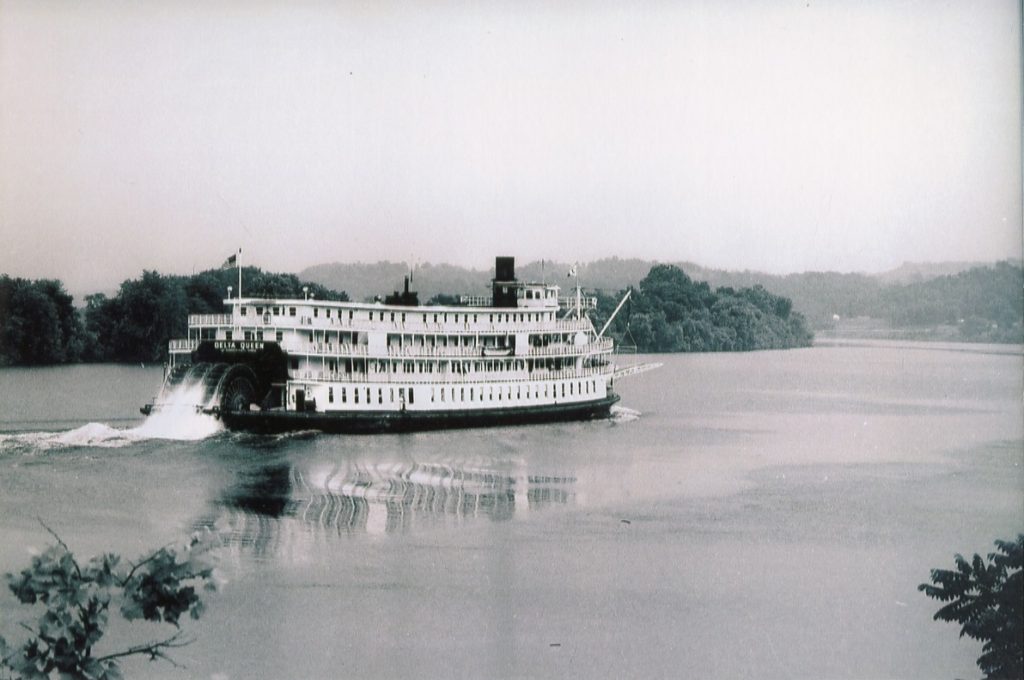
Fabricated at Glasgow, Scotland along with her sister ship, the DELTA KING. All steel work was done on the River Clyde at the Isherwood Yard, Glasgow. Both boats were knocked down and the sections sent by steamship to San Francisco and then barged to Stockton where the boats were completed. The building operations extended from 1924 through part of 1927. Her machinery was built at Denny’s Shop in Dumbarton; the paddlewheel shafts and cranks were forged at the Krupp Works, Germany. The upper cabins were built by U.S. shipwrights, four decks high, largely of oak, teak, mahogany, and Oregon cedar. When completed the two boats were the most expensive river sternwheelers [existing], costing $875,000 each. In the beginning of her career she ran in the San Francisco-Sacramento trade on a regular year-round schedule. Frequent excursions were made to Stockton. She frequently carried 800 tons of freight. The staterooms slept 200. Rooms and passenger areas were air-conditioned, hot air heat. The cabins were finished in solid oak with natural mahogany and walnut trim. Plate glass windows surmounted by colored, leaded, stained glass transoms surrounded copious forward lounging areas. Seven watertight compartments divided the hulls [and]all hull space [was] usable. The kitchen was in the hold, pantries and dining room on the boiler deck, with dumbwaiters to convey food and utensils. The main deck was built entirely of ironwood from Thailand. Many rooms had connecting shower or bath, white tiled, and twin beds. All hardware was solid brass. The DELTA QUEEN and her sister ship were dedicated at the Banner Island shipyard, Stockton, on Friday, May 20, 1927 and entered service about June 1. They did handsomely, weathered the Great Depression, but a modern highway linking San Francisco and Sacramento was too much. The DELTA QUEEN’s last trip came on the closing day of the Golden Gate International Exposition, Sunday, September 29, 1940. Both boats were sold. After Pearl Harbor on December 7, 1941, the Navy took both boats and used them in the San Francisco Bay area, painted drab gray, designated “Yard Ferry Boats”. At war’s conclusion, they were turned over to the U.S. Maritime Commission. The DELTA QUEEN was sold at public sale to Greene Line Steamers. She was then transferred to New Orleans, first undergoing repairs and a complete renovation. Changes were extensive. Her two cabin decks were extended forward, dining room placed on the main deck which was formerly the freight area. The air-conditioning was completely renovated; paddlewheel covering was removed; fuel capacity augmented; many new luxury cabins added where the dining room had originally been; new pantries, bar and toilet facilities appended to numerous staterooms. Refit professionals worked extensively with both epoxy and vinyl ester resin systems to get the boat back to its best. The DELTA QUEEN left the Dravo Corporation yard at Neville Island, Pennsylvania on February 28, 1948 and arrived at Cincinnati March 1 to receive her new furniture, a swinging stage, etc. Since then she has been in tourist service on the Ohio, Mississippi, Tennessee and Cumberland rivers. Following the untimely death of Captain Tom R. Greene on July 10, 1950, the DELTA QUEEN was managed by his widow, Letha Cavendish Greene until advertised for sale. Richard C. Simonton reorganized Greene Line Steamers in 1950 and the DELTA QUEEN became a profitable venture. After Simonton became ill, on November 21, 1969, Greene Line was transferred to Overseas National Airways with operations based at Kennedy International Airport. The DELTA QUEEN ran head-on into Public Law 89-777 prohibiting the operation of wooden superstructure overnight passenger vessels. In 1971, President Richard M. Nixon exempted the DELTA QUEEN from the terms of the law for three years. [Subsequent presidential sanction has kept the boat operative until 2008, and on December 4, 2018was re-exempted from sanctions and will return to cruising in 2020.] The DELTA QUEEN was brought 5,380 statute miles by sea, the lengthiest salt water transit of record for a flat-bottom sternwheeler.
As the old Ohio flows….


